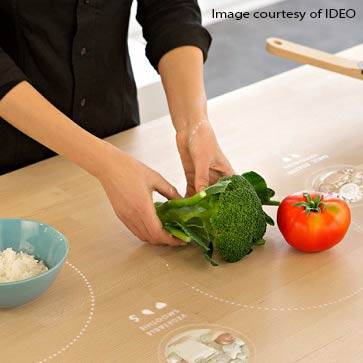Design for the future
18 November, 2015 Reading: 2:06 mins
Our Content Executive, Rich, tells us about a few futuristic designs discovered at the recent Innovate conference

After listening to various talks at Innovate, which offers a global spotlight on UK innovation, it’s clear that even the simplest objects are getting a digital makeover that transforms the way we utilise them.
Siri Johansson, a young designer at Ideo, expressed how design is there to make life simpler and invite people to become more creative by being able to interact with everyday objects.
One project Siri presented was the KitchenConcept2025, which sees our kitchen table become the main focus of the room. Not only will the table recognise any food that’s placed on top, but it will then proceed to give you recipe ideas.
Funnily enough our Digital Director, John Dibb, mentioned this concept in a talk about future technology. However, hearing first hand from a designer involved in the project hammers home just how real these ‘distant’ visions are.
This kind of design shows that even when it comes to our most basic needs, technology will still have a say in our choices and decisions.
Although this is all very clever technology and could change the way we work in the kitchen, I feel equipment like this can hinder creativity. Especially with an activity such as cooking, it’s the mistakes you make during the process that can develop you as a cook and make it entertaining. Where will our inventive cooks come from in years to come?
One invention that did get me very excited was an ingenious bit of kit on the horizon in the world of healthcare. Ben Griffin, who chaired one of the sessions, explained how casts for broken bones would soon be intelligent.
The cast will be able to recognise when your injury is improving, then proceed to gradually give you more and more movement over time. With innovations like this becoming a reality, the possibilities of improving one’s health are endless – especially in areas like the armed forces, where rehabilitation for soldiers is so important, it’s very exciting to see. Furthermore, these kinds of devices not only help the user, but medical staff too, allowing patients to effectively monitor their own health.
Hopefully one day we will see it being used in the furthest reaches of the world, where good, reliable healthcare can sometimes be hard to come by.
Overall, it is obvious that design does have the power to change lives. And it’s happening on our doorstep, right now!